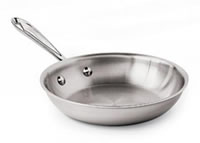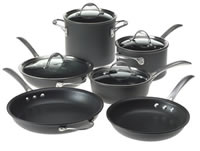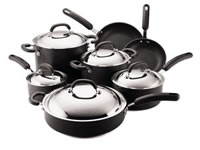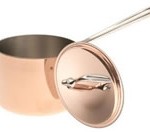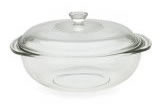Cookware materials are the most important attribute of good cookware. The cookware materials must be suitable for the cook or they will not serve the cook nor last long. I encourage you to first review the articles in this section to determiner the best materials that match your cooking style. A few key things to consider is if it is dishwasher safe, healthy, clad, or costly. Personally, I like stainless steel cookware because it’s easy to clean and can go into the dishwasher. I do use nonstick skillets for egg and fish fillet dishes. I like fully clad cookware because it heats so much better up the side walls. That helps with thick sauces, braises, oatmeal, and rices.
Reviewing the chart below of common cookware materials is a great place to begin.
Once you know the best cookware materials, go to the cookware brands page to see the brands that have product lines for that cookware material.
Enjoy!![]()
Mark
Your Cookware Helper
Your Cookware Helper . com
|
||
|
Cookware Material
|
Advantages
|
Disadvantages
|
|
|
Durable and long lasting. Nice appearance. Easy to clean. Usually dishwasher safe. It is considered “low stick.” Healthy as long as it does not have nonstick interiors. |
Does not distribute heat well without copper or aluminum layers – “clad.” Wide price range depending on how many clad layers. The steel can tint if overheated. |
|
|
The most common cookware material. Generally inexpensive. Distributes heat well so it reduces “hot spots.” One-third the weight of stainless steel, and twice as strong. Even without a nonstick surface, it is considered “low stick.” Insides usually have a nonstick surface now. |
Preferred washing method is hand washing. Dark color makes it hard to visually inspect cooking foods. Most are not dishwasher safe. Avoid if you are trying to severely limit aluminum in your diet. |
|
|
Extreme durable. Lasts for generations. Very precise heat distribution. Considered a healthy cookware unless you need to avoid iron. Naturally nonstick Surface improves over time. New enamel surfaces offer varied colors and are also considered healthy. |
Heavy. Requires hand washing and drying. Non-enameled products are subject to rusting if not cared for. Non-enameled surfaces usually needs to be “seasoned” to get the nonstick surface. |
|
|
Easy to clean. Usually requires less fat or liquids to cook with. Great for quick and delicate cooking. Some are now dishwasher safe. The newest varieties are starting to be eco-friendly or “green” that don’t have the nasty chemicals. |
Avoid high heat, metal utensils, or harsh cleaning pads and cleaners. Usually not dishwasher safe. Inexpensive pieces may flake or wear off into your food. There are health uncertainties. Quality is dependant on the actual cookware material under the nonstick coating. |
|
|
The absolute best for heat distribution whether on the outside or clad inside. Copper is usually found clad inside anodized aluminum or stainless steel. |
Expensive. Requires hand washing. Copper is toxic if its internal layer becomes exposed. It may need to be polished to maintain its luster when clad on the outside. |
|
Glass / Ceramic / Stoneware Cookware |
Dishwasher safe. Attractive and versatile. It is considered “low stick.” Versatile in that some can be taken from refrigerator or freezer to stove top or oven. Easy to see contents. Does not absorb food odors. Retains heat well. Considered a healthy cookware material. |
Subject to thermal shock, and can break. Does not distribute heat very well, except for stoneware and clay pieces. Usually cannot be used on stoves at medium heat or higher. |

